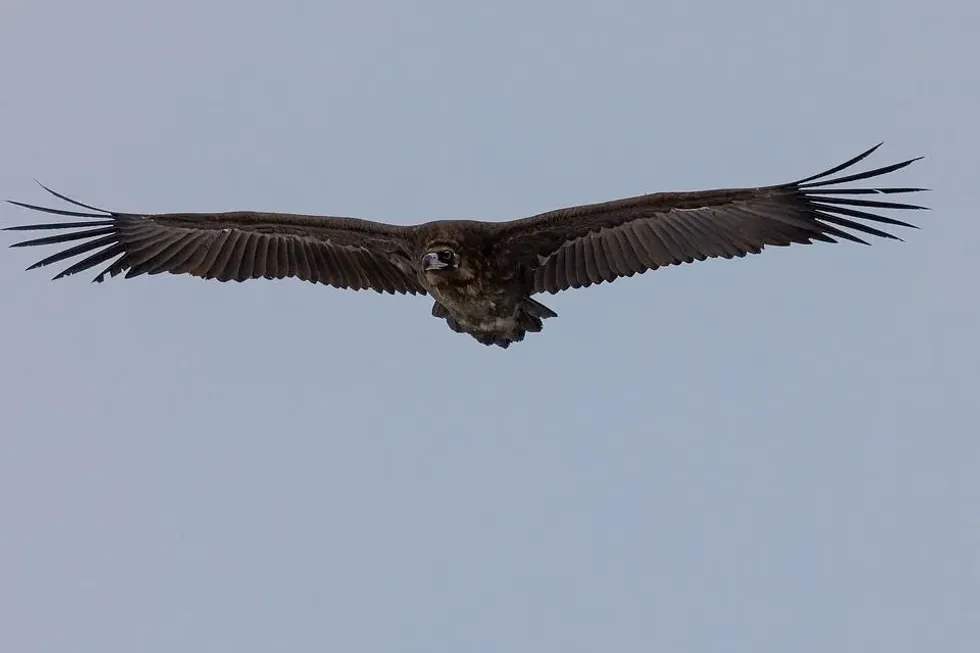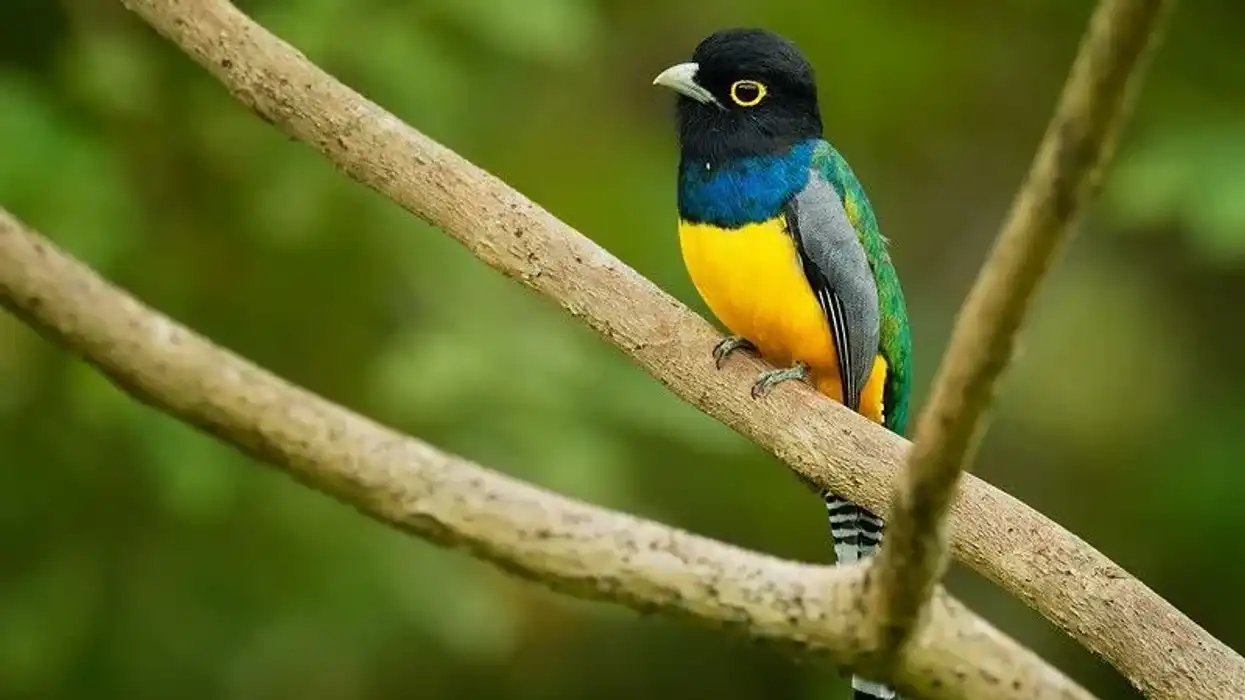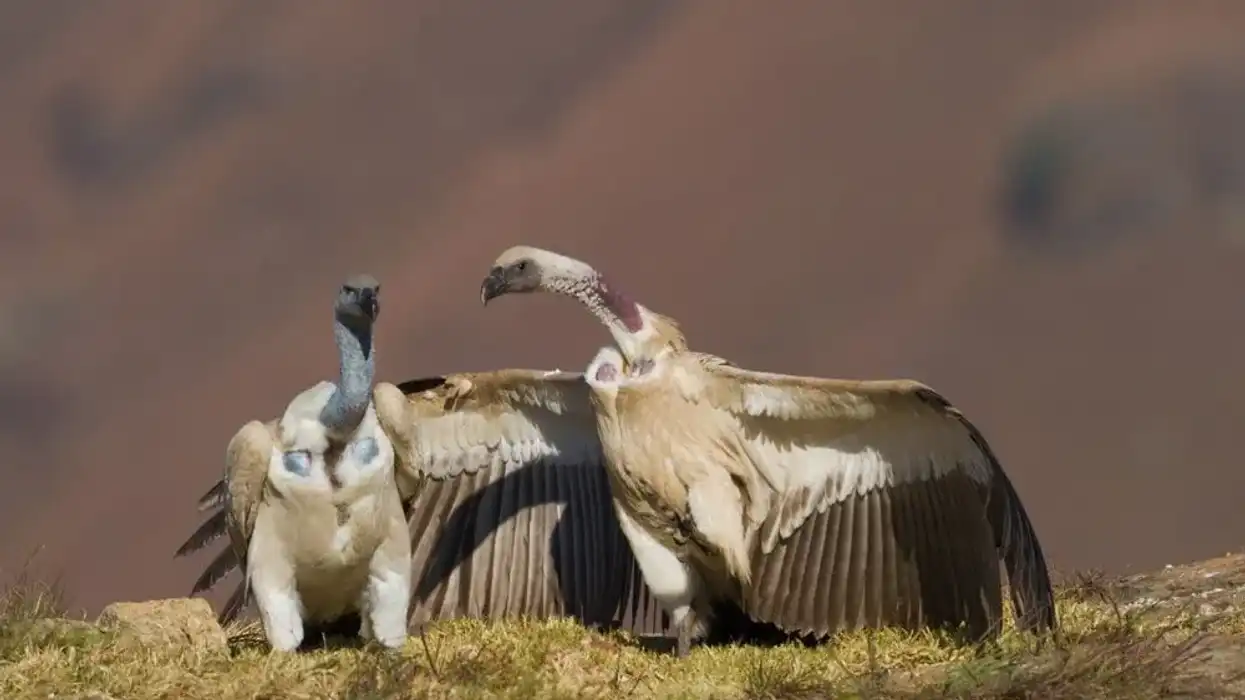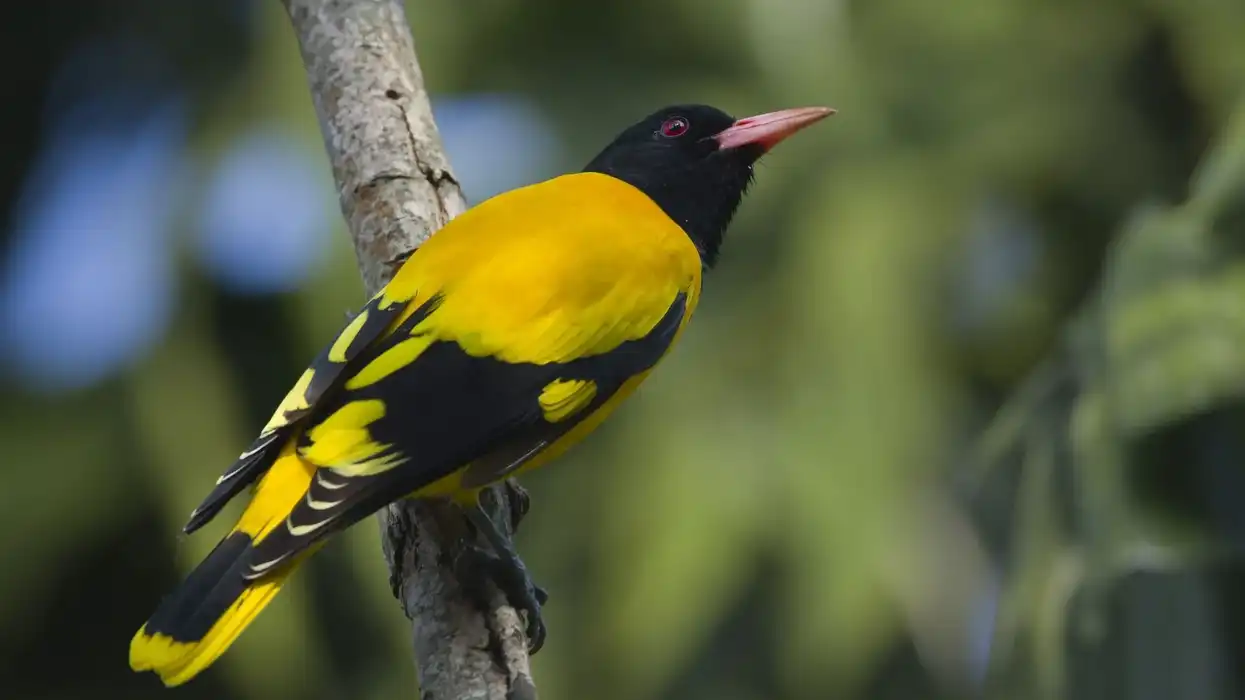A vulture is a scavenger bird that preys on carrion. Vultures are usually categorized into two groups: Old World vulture and New World vulture.
The black vulture (Coragyps atratus), also called the American black vulture, belongs to the New World vulturefamily. It is the only member of the Coragyps genus in the family of Cathartidae.
These birds live in warm and temperate areas. Black vulture almost exclusively feed on carrion and can locate them in the highest skies. It finds its meals either using its keen eyesight, or by following Turkey vultures to spot carcasses as they have a poor sense of smell.
Later, Black vultures flock quickly take over the carcasses from Turkey vultures. Black vultures are highly social birds and stay loyal to their family; their young ones are fed even after they've fledged and they share their food with family.
After discovering these interesting black vulture facts, try exploring our similar articles like vulture and harpy eagle facts.
Black Vulture Interesting Facts
What type of animal is a black vulture?
Black vultures are large carcass-eating birds with broad wings, short tails, and powerful wingbeats.
What class of animal does a black vulture belong to?
The black vultures (Coragyps atratus) belongs to a group of warm-blooded vertebrates of Aves class.
How many black vultures are there in the world?
The population of black vultures seems to be stable, with 20 million birds globally, out of which about 9% of birds are in U.S. habitat, and 8% of birds are in Mexican habitat.
Where does a black vulture live?
Black vultures can be found in tropical and temperate areas from southeastern North America through Mexico to southern South America, including portions of the United States. It is observed that its breeding range is northward.
These vultures can be found in Peru, central Chile, and Uruguay in South America. These birds even stray on Caribbean islands. These North American birds move towards the south during fall and return to the north in the spring.
What is a black vulture's habitat?
The black vulture lives year-round in open areas of scattered forests or shrublands. These birds also breed in dense woodlands, grasslands, and wetlands.
They are most abundant in low lands and rarely inhabit the mountains. They generally roost in undisturbed tall trees or close to water. These birds can be seen soaring or perched on fence posts or dead trees much of the time.
Who do black vultures live with?
Black vultures are social birds and often eat, fly or roost in large flocks called a committee, venue, or volt. A 'kettle' refers to a flock of vultures in flight, and they are called a 'wake' when the birds are feeding together on a carcass.
How long does a black vulture live?
A Black Vulture's life span is typically 10 years, but with fewer natural predators, these large birds are observed to survive up to 25.6 years.
How do they reproduce?
Black vultures are monogamous; they mate with the same bird for many years. The eggs are laid on the ground, a hollow trunk, or some other cavity almost below 10 ft (3.1 m) height in woody areas.
The black vulture does not use any nesting materials to build a nest but decorates the area they lay eggs with bits of bright plastic caps, glass pieces, or metal items. They generally lay two eggs; however, their litter size ranges from one to three.
This egg is oval-shaped and has a gray-green, bluish, or white smooth shell with lavender or pale brown spots on the larger end.
Eggs are incubated by both parents. The egg hatches in 28-41 days, the young birds are covered with buffy fur.
Both parents feed the chicks; the young birds remain in the nest for at least two months. After 75-80 days, a young bird can fly independently.
What is their conservation status?
Black vultures are common breeders in their range. As per the IUCN Red List, they are a Least Concern (LC) species, and the number of these birds is increasing and found to be stable in recent years. They are not considered a rare species.
Black Vulture Fun Facts
What do black vultures look like?
Black vultures are covered with black plumage and white patches on the underwings. They have bare gray heads with a short tail and a long, slender bill that becomes white at the tip as they get older. As they fly, the outstretched wingtips or fingers are beautiful to look at.
How cute are they?
The black vultures is an amazing bird to watch, owning black plumage with white wingtips. These black vultures often roost near water bodies or obstructions that generate updrafts of air.
With a cool breeze early in the morning, these birds, with a unique flight pattern of a few deep and rapid wingbeats accompanied by a widespread of their wings of 4.5-5 ft, make a striking look from afar. They are scavengers though, so are not very cute.
How do they communicate?
Due to the lack of a syrinx bird's vocal organ, the black vulture species can only make grunts and low hisses.
How big is a black vulture?
Black vultures 22-29 in (56-74 cm) long, slightly larger than a red-tailed hawk..
How fast can a black vulture fly?
According to a study in North America, the black vulture flies at a speed of 22.1-37.6 mph (35.6-60.5 kph)..
How much does a black vulture weigh?
North American birds and birds from the Andes region weigh 3.5-6.6 lb (1.6 to 3 kg). Small vultures from low tropical land weigh 2.6–4.3 lb (1.2-19 kg).
What are their male and female names of the species?
No specific term is given to distinguish a male and female black vultures. Moreover, a male species and a female species look alike with no significant difference in color, size, or weight.
What would you call a baby black vulture?
Like other similar species, baby Black Vultures are called chicks, and once they can fly, they are called fledglings.
What do they eat?
It forages at garbage dumps and takes eggs and decomposing plant material in human-populated areas. Black vultures like to feed on pigs, goats, donkeys, possums, skunks and other such animals.
They also dive into shallow water to capture small fish and carrion. They often search dumpsters and landfills for human waste.
This bird also preys on livestock or deer sometimes. It is the only New World vulture species that feed on cattle.
These birds sometimes harass cows in labor and prey on newborn calves as calves will allow vultures to approach them in their first few weeks. These vultures hover around the calf in a flock and will scratch and peck at the calf's eyes, nose, or tongue leaving the calf shocked and eventually killed by the vultures.
Similar to other Vultures, it makes a significant contribution to the ecosystem by absorbing carrion. Black vultures frequently have large territories and spend a lot of time soaring, searching for their next meal.
Are they dangerous?
Black vultures are generally harmless to humans, but their dietary habits may disgust you, although they are nature's ultimate composting experts. vultures eat the flesh of dead animals reducing sources of deadly pathogens that can be transferred to humans.
Would they make a good pet?
Adopting these black vultures as a pet is not a good idea because the nature of their diets mainly includes carcasses as the food which Black vultures like. The droppings are also acidic and can harm trees and other vegetation.
The behavior of these birds is also a concern as they can also attack other cattle. By law, a person needs special permits to make it a pet.
It is illegal to hunt or own black vultures in the United States without a permit, and violating the law is punishable by a fine of up to $15,000. However, you can explore black vultures close-up and study its behavior by visiting a zoo or wildlife rehabilitators.
Did you know...
The present species of black vultures are known to be evolved from the Western black vultures, which belongs to the Old World vultures group. Black Vultures do not differ much, except that they were 10–15% larger with flatter and broader bill.
What is the difference between a black vulture and a turkey vulture?
Black vultures vs. Turkey vultures: the Black vultures has a black or dark gray head with a dark bill, while a Turkey vulture has a redhead with a white bill. The feathers of black vultures have dark black plumage, while a Turkey vulture's feathers are dark brown.
At the same time, Turkey vultures less than one year old have dark gray heads and dark bills, similar to a black vulture. These Vultures will occasionally kill livestock, while Turkey vultures rarely attack living prey.
Turkey vultures have a good sense of smell and may detect a carcass from 5 mi (8.1 km) away. Black vultures lack this ability and take advantage of the Turkey vulture's sense of smell to reach their food.
Black Vultures hunt in larger groups, whereas Turkey vultures hunt alone or in small groups.
These two birds' flight habits vary as well. Black vultures with short tails and white tips fly with their wings almost flat.
On the other hand, a Turkey vulture flies holding its wings at an angle. While soaring, the Black vultures do not sway back and forth like the Turkey vultures.
Black Vultures flap their wings more frequently and rapidly. In contrast, Turkey vulture soaring can last probably up to six hours without flapping its wings and slow wing beat.
Are black vultures dangerous to pets?
As these black vultures are aggressive, this behavior of the bird can be dangerous to pets as they can kill or injure newborn cattle. It is important to keep an eye on young cattle and mothers who are about to give birth, as they may be easy food for these birds.
Here at Kidadl, we have carefully created lots of interesting family-friendly animal facts for everyone to discover! Learn more about some other birds including crowned eagle, or hawk.
You can even occupy yourself at home by drawing one on our Black Vulture coloring pages.










